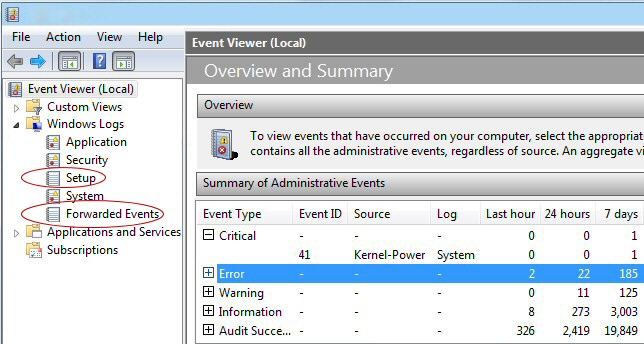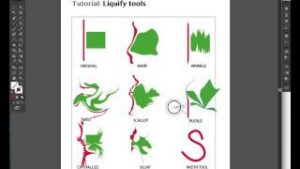
Windows Event Viewer is a powerful diagnostic tool built into Windows 8, designed to help users monitor and troubleshoot system events, errors, and warnings. It provides detailed logs of various system activities, including application crashes, hardware failures, security breaches, and system performance issues. By analyzing event logs in Windows Event Viewer, users can gain insights into the health and stability of their system, identify potential problems, and take appropriate action to resolve them. In this comprehensive guide, we’ll explore everything you need to know about using Windows Event Viewer in Windows 8, from accessing the tool to interpreting event logs and troubleshooting common issues effectively.
Accessing Windows Event Viewer:
To access Windows Event Viewer in Windows 8, follow these steps:
- Open Event Viewer: Press the Windows key to open the Start menu, then type “Event Viewer” in the search bar. Click or tap on “Event Viewer” in the search results to launch the tool.
- Alternatively, Access via Control Panel: You can also access Event Viewer through the Control Panel. Open the Control Panel by pressing the Windows key to open the Start menu, then typing “Control Panel” and selecting it from the search results. In the Control Panel, navigate to “System and Security” > “Administrative Tools” > “Event Viewer.”
Understanding Event Logs:
Windows Event Viewer organizes system events into different logs, each representing a specific category of events. The main event logs available in Windows Event Viewer include:
- Application: Logs events related to applications and programs running on your system, such as application crashes, errors, and warnings.
- Security: Logs events related to security-related activities on your system, such as logon attempts, user authentication, and security policy changes.
- System: Logs events related to system-level activities and errors, such as hardware failures, driver errors, and system startup/shutdown events.
- Setup: Logs events related to software installation, configuration changes, and system setup activities.
- Forwarded Events: Logs events forwarded from other computers in the network, typically used for centralized event log collection and analysis in enterprise environments.
Interpreting Event Logs:
When viewing event logs in Windows Event Viewer, consider the following:
- Event ID: Each event in the event log is assigned a unique Event ID, which identifies the type of event and provides additional information about the event.
- Source: The Source field indicates the program, component, or service that generated the event.
- Description: The Description field provides detailed information about the event, including any error codes, timestamps, and relevant context.
- Level: The Level field indicates the severity level of the event, such as Information, Warning, Error, or Critical.
- Keywords: Keywords provide additional context about the event, such as the type of activity or the component affected.
Filtering and Searching Event Logs:
To filter and search event logs in Windows Event Viewer, follow these steps:
- Filter Events: Use the Filter Current Log option in the Action menu to filter events based on specific criteria, such as event level, event source, event ID, or keywords.
- Custom Views: Create custom views in Event Viewer to filter events based on predefined criteria or create custom filters to view specific types of events.
- Search Events: Use the Find option in the Action menu to search for specific keywords or phrases within event logs. You can search for events by event ID, source, description, or other criteria.
Troubleshooting with Event Viewer:
Event Viewer can be a valuable tool for troubleshooting various issues on your Windows 8 computer. Here are some common troubleshooting scenarios where Event Viewer can be useful:
- Application Crashes: Use the Application log to identify and diagnose application crashes, errors, and warnings. Look for events with a level of Error or Warning in the Application log and review the event details for clues about the cause of the crash.
- System Errors: Use the System log to identify and diagnose system-level errors, such as hardware failures, driver errors, and system startup/shutdown issues. Look for events with a level of Error or Critical in the System log and review the event details for potential issues.
- Security Breaches: Use the Security log to monitor and investigate security-related events, such as logon attempts, user authentication failures, and security policy changes. Look for events with a level of Audit Failure in the Security log and review the event details for signs of unauthorized access or security breaches.
- Performance Issues: Use the System log and other logs related to system performance to monitor and diagnose performance-related issues, such as high CPU usage, memory leaks, and disk I/O bottlenecks. Look for events related to performance counters, resource exhaustion, or system slowdowns and review the event details for insights into performance problems.
Exporting and Saving Event Logs:
To export and save event logs from Windows Event Viewer, follow these steps:
- Select Event Logs: In Windows Event Viewer, select the event logs you want to export from the left pane. You can select multiple event logs by holding down the Ctrl key while clicking on each log.
- Export Logs: Right-click on the selected event logs and choose the “Save All Events As” option. Specify a location and file format for the exported event logs, such as .evtx (Event Log file format), and click or tap on “Save” to export the logs.
Conclusion:
Windows Event Viewer is a powerful diagnostic tool in Windows 8, providing users with detailed logs of system events, errors, and warnings. By accessing and analyzing event logs in Event Viewer, users can gain insights into the health and stability of their system, identify potential problems, and take appropriate action to resolve them. Whether you’re troubleshooting application crashes, system errors, security breaches, or performance issues, Event Viewer offers a centralized hub for monitoring and diagnosing system events, helping to maintain the reliability and performance of your Windows 8 computer. With its user-friendly interface and comprehensive logging capabilities, Event Viewer is an essential tool for system administrators, IT professionals, and power users alike.




